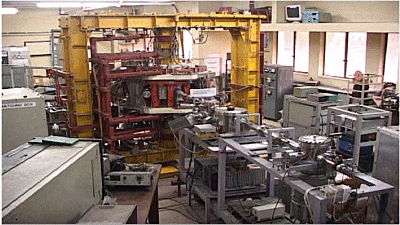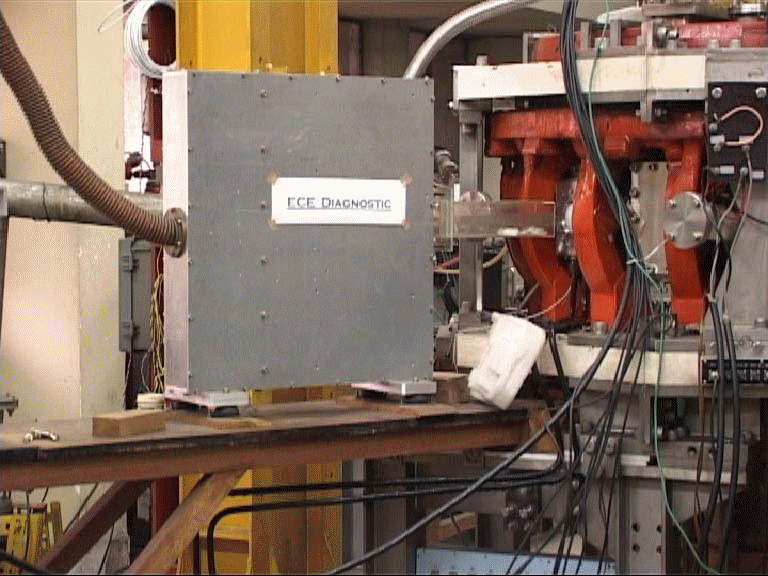
Facilities
TOKAMAK Plasma

Ion Acceleration by MHD Activities
Ion acceleration due to large-scale magneto hydrodynamic (MHD) activities in the Saha Institute of Nuclear Physics (SINP) Tokamak is investigated by using a retarding field ion energy analyser looking from the tangential direction. Detection of high energy ions along with the bulk low energy ions seems to have a close connection with electron acceleration due to the electric field of the m/n =2/1 tearing modes.
Intermittency in heat and Particle transport in the Scrapeoff layer
In the SINP tokamak, the plasma density and the temperature have been found to exhibit burst like behaviour. The formation, propagation and decay of long-lived plasma structures are believed to be the cause of this intermittency. Wavelet analysis has shown that the cross-correlation between two probes is also intermittent in time and is connected to the passage of plasma structures. The convected and conducted heat fluxes are also intermittent in nature. The structures decay in density as they move radially outward but their temperature is found to decay more rapidly, as expected from theoretical models.
Radial transport of nonthermal electrons in SINP Tokamak
X-ray bursts from nonthermal electrons (10 keV to 1 MeV) emanating from the core plasma and the limiter are measured simultaneously in runaway dominated discharges in the SINP tokamak using a tangentially viewing NaI(Tl) detector and a detector that views the limiter areas. The radial transport coefficient of the nonthermal electrons has been derived from the cross-correlation function of the two x-ray intensities. Two phases of the plasma discharges with distinct transport of the nonthermal electrons are found in these experiments. The stochastic magnetic field fluctuations obtained from the transport coefficients are found to have a relationship with the autocorrelation functions of the x-ray emissivity signals.
Hard x-ray correlation analysis as a diagnostic tool for the measurement of magnetic turbulence in tokamaks
A diagnostic has been developed for the measurement and characterisation of the magnetic turbulence occurring in the core region of a tokamak. A specially shielded detector looking in the tangential direction has been employed to measure the thin target bremsstrahlung from the core plasma. The thick target bremsstrahlung from the limiter is also recorded at the same time. Auto- and cross-correlation analyses have been shown to yield respectively the stochasticity of the magnetic fluctuations in the core region and the consequent diffusion coefficient of the nonthermal electrons. The measured stochasticity bears a relationship with the diffusion coefficient. Data obtained from internal magnetic probes corroborate the above trend but the hard x-ray measurement data are shown to be more reliable than those obtained from magnetic probes
Improved Confinement due to Current Profile Modification and Suppression of Drift-Alfven Mode by Biased Electrode in SINP-Tokamak
Electrode biasing experiment in the plasma edge is carried out in the normal q regime of the SINP-Tokamak to investigate L-H mode transition. A negative bias is applied to the electrode by a fast switching circuitry. Above a minimum voltage applied Ha line intensity decreases and energy confinement time increases compared to without bias case. Detailed investigations shows due to application of the bias toroidal current profile is modified and drift-Alfven mode is suppressed which is believed to cause the improvement of the plasma confinement.